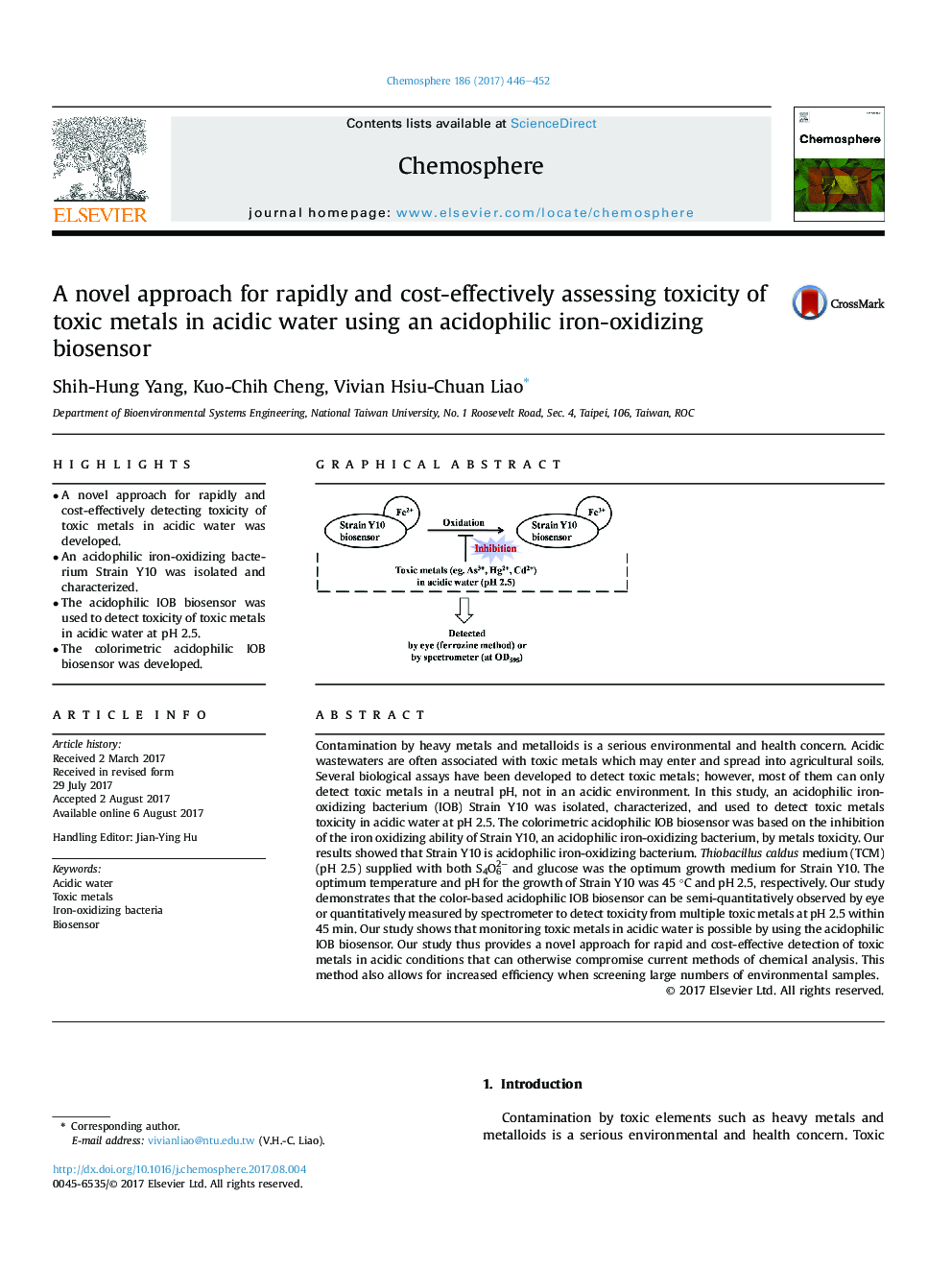| کد مقاله | کد نشریه | سال انتشار | مقاله انگلیسی | نسخه تمام متن |
|---|---|---|---|---|
| 5746059 | 1618785 | 2017 | 7 صفحه PDF | دانلود رایگان |
- A novel approach for rapidly and cost-effectively detecting toxicity of toxic metals in acidic water was developed.
- An acidophilic iron-oxidizing bacterium Strain Y10 was isolated and characterized.
- The acidophilic IOB biosensor was used to detect toxicity of toxic metals in acidic water at pH 2.5.
- The colorimetric acidophilic IOB biosensor was developed.
Contamination by heavy metals and metalloids is a serious environmental and health concern. Acidic wastewaters are often associated with toxic metals which may enter and spread into agricultural soils. Several biological assays have been developed to detect toxic metals; however, most of them can only detect toxic metals in a neutral pH, not in an acidic environment. In this study, an acidophilic iron-oxidizing bacterium (IOB) Strain Y10 was isolated, characterized, and used to detect toxic metals toxicity in acidic water at pH 2.5. The colorimetric acidophilic IOB biosensor was based on the inhibition of the iron oxidizing ability of Strain Y10, an acidophilic iron-oxidizing bacterium, by metals toxicity. Our results showed that Strain Y10 is acidophilic iron-oxidizing bacterium. Thiobacillus caldus medium (TCM) (pH 2.5) supplied with both S4O62â and glucose was the optimum growth medium for Strain Y10. The optimum temperature and pH for the growth of Strain Y10 was 45 °C and pH 2.5, respectively. Our study demonstrates that the color-based acidophilic IOB biosensor can be semi-quantitatively observed by eye or quantitatively measured by spectrometer to detect toxicity from multiple toxic metals at pH 2.5 within 45 min. Our study shows that monitoring toxic metals in acidic water is possible by using the acidophilic IOB biosensor. Our study thus provides a novel approach for rapid and cost-effective detection of toxic metals in acidic conditions that can otherwise compromise current methods of chemical analysis. This method also allows for increased efficiency when screening large numbers of environmental samples.
140
Journal: Chemosphere - Volume 186, November 2017, Pages 446-452
